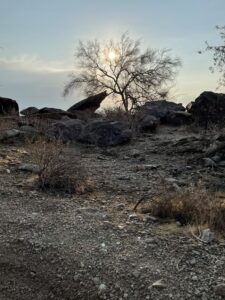News & Updates
How to Leave No Trace During a Drought


The warmth of summer brings us back outdoors, but when that warmth is paired with a lack of rain we can see damaging drought conditions. There are several things to consider when spending time outside during a drought, below are just a few examples to help you stay cool, even in a drought.

Protect Limited Water
Since droughts are caused by a shortage of water, let’s start there! Properly disposing of waste-water is always important, doubly so when there’s less water around to dilute and flush away harmful substances. During droughts freshwater recreation areas could become impacted by high concentrations of toxic algae, harmful bacteria, and chemical contaminants. An important step in protecting yourself is learning the water-quality beforehand and rinsing off after you’re out of the water. To protect our water resources, grey water should be disposed of over a broad area 200 feet from all water sources.
Plants and Animals
It’s not just people that have a tough time outside during a drought, plants and animals don’t have the luxury of air conditioning. Lack of water damages internal structures and can reduce plant growth. These effects cause stresses which make the plant more susceptible to parasites and disease. Wildlife struggle to find food, water, and cover when impacted by drought, causing them to travel further afield and deeper into developed areas. Because of this, drought conditions can increase the likelihood of interactions between humans and wildlife. To reduce the possibility of a chance encounter, trash, food remains from cooking on the grill, and ripe garden fruits and veggies should be stored in an animal-proof container.
Wildfire Prevention
Unfortunately, wildfires often go hand-in-hand with drought. With more than 80% of wildfires caused by human activity, campfire safety is a must in drought conditions. Policies regarding building campfires vary, so double-check that a campfire is allowed before making plans. There are several alternatives to campfires that should be explored before deciding to build one. Alternatives include cooking food on a camp stove, using headlamps to see at night, and packing extra warm layers to keep warm. If building a campfire is allowed and decided upon, utilizing a pre-existing fire ring is best, followed by a fire-pan or mound fire. When constructing the fire, make sure to use smaller, more manageable pieces of fuel and stay with a campfire until it has burnt down to ashes. To put out the fire drown the ashes with water and stir the sediment up. Before leaving a campfire unattended, make sure the soupy ashes are cool to the touch.
Droughts can offer unique challenges for all of us when we’re enjoying the outdoors, but planning ahead can help reduce our impact even during the height of the summer heat. Stay cool and hydrated out there and remember to #LeaveNoTrace.
By the Subaru/Leave No Trace Teams. For over 20 years these teams have provided tangible solutions to serious issues facing our outside space and reach over 15 million people every year. Learn more about the important work of our mobile education teams. Proud partners of this program include Subaru of America, REI, Eagles Nest Outfitters, Thule, Fjällräven, The Coleman Company and Klean Kanteen.
Let’s protect and enjoy our natural world together
Get the latest in Leave No Trace eNews in your inbox so you can stay informed and involved.
